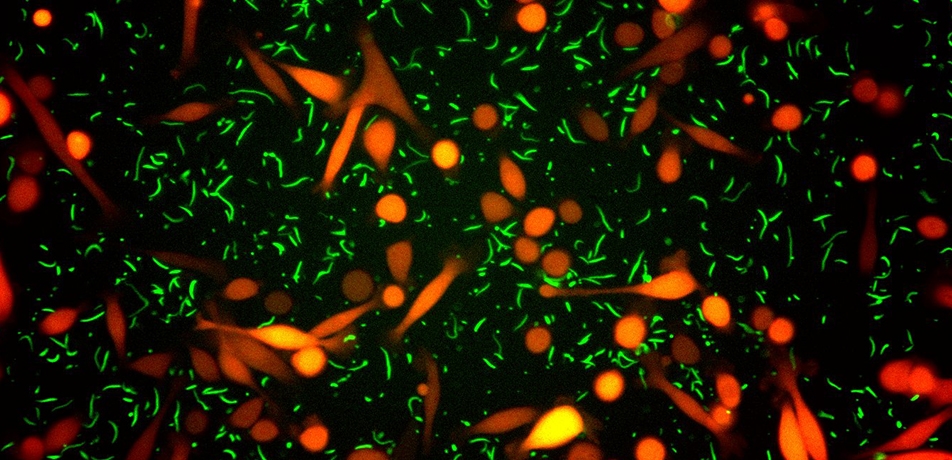Maleficent microbe
Bacteria’s role in failed pancreatic cancer treatment
Briefs

Credit: Straussman lab
Deep within the cells of human pancreatic tumors, a particularly obstructionist bug may be hindering the success rates of chemotherapy.
A Weizmann Institute-led research team has found that the offending bacteria class in question, called Gammaproteobacteria, can express an enzyme capable of metabolizing the cancer treatment drug gemcitabine into an inactive form. Those same culprit bacteria happen to inhabit a high percentage of the most common pancreatic cancer, called human pancreatic ductal adenocarcincoma. In a recent article published in Science, the researchers, led by Dr. Ravid Straussman of the Department of Molecular Cell Biology, demonstrated how coupling antibiotics with chemotherapy might provide a significantly superior treatment option for an often lethal form of cancer.
The study was done by Leore Geller, a PhD student in Dr. Straussman’s lab, in collaboration with Dr. Todd Golub and Dr. Michal Barzily-Rokini of the Broad Institute of MIT, and other groups.
The problematic bacteria, Dr. Straussman explains, live within pancreatic cancer tumors, and even within the tumor cells themselves. “We first used different methods to prove that there really were bacteria inside the tumors,” says Dr. Straussman. “Then we decided to look at the effect that these bacteria might have on chemotherapy.”
The researchers isolated bacteria from the tumors of human pancreatic cancer patients and tested how these bacteria affected the sensitivity of cancer cells to gemcitabine, the chemotherapy medication often used to treat this kind of cancer. Sure enough, they discovered that some of these bacteria prevented the treatment from working by metabolizing the drug and rendering it ineffective.
The researchers discovered that a bacterial enzyme called cytidine deaminase (CDD), is responsible for the failure of the treatment. They showed that the enzyme comes in both long and short forms, and that only bacteria with the long form of the CDD could inactivate gemcitabine.
In an investigation of more than 100 human pancreatic tumors, they went on to find that these particular Gammaproteobacteria with long CDD are, in fact, present in pancreatic ductal adenocarcinomas. The discovery could prove to be a major step forward for the future treatment of patients with pancreatic cancer.
“The results indicate that these tumors contain bacteria that could potentially modulate tumor sensitivity to gemcitabine,” says Leore Geller. “However, more clinical studies need to be done before we can better understand the impact of intra-tumor bacteria on chemoresistance in pancreatic cancer patients and to eventually offer them more and better treatment options.”
Dr. Straussman and his team are now addressing whether these and other bacteria may be found in other cancer types, and if so, what effects they might have on the these diseases and their sensitivity to anti-cancer drugs.
Dr. Ravid Straussman is supported by the Dr. Dvora and Haim Teitelbaum Endowment Fund, the Hymen T. Milgrom Trust donation fund, Rising Tide Foundation, and Mr. and Mrs. Andrew R. Morse. He is the incumbent of the Roel C. Buck Career Development Chair.







